Sales Enablement Playbook 101: Ultimate Guide for RevOps & Pipeline Velocity (2025 Edition)
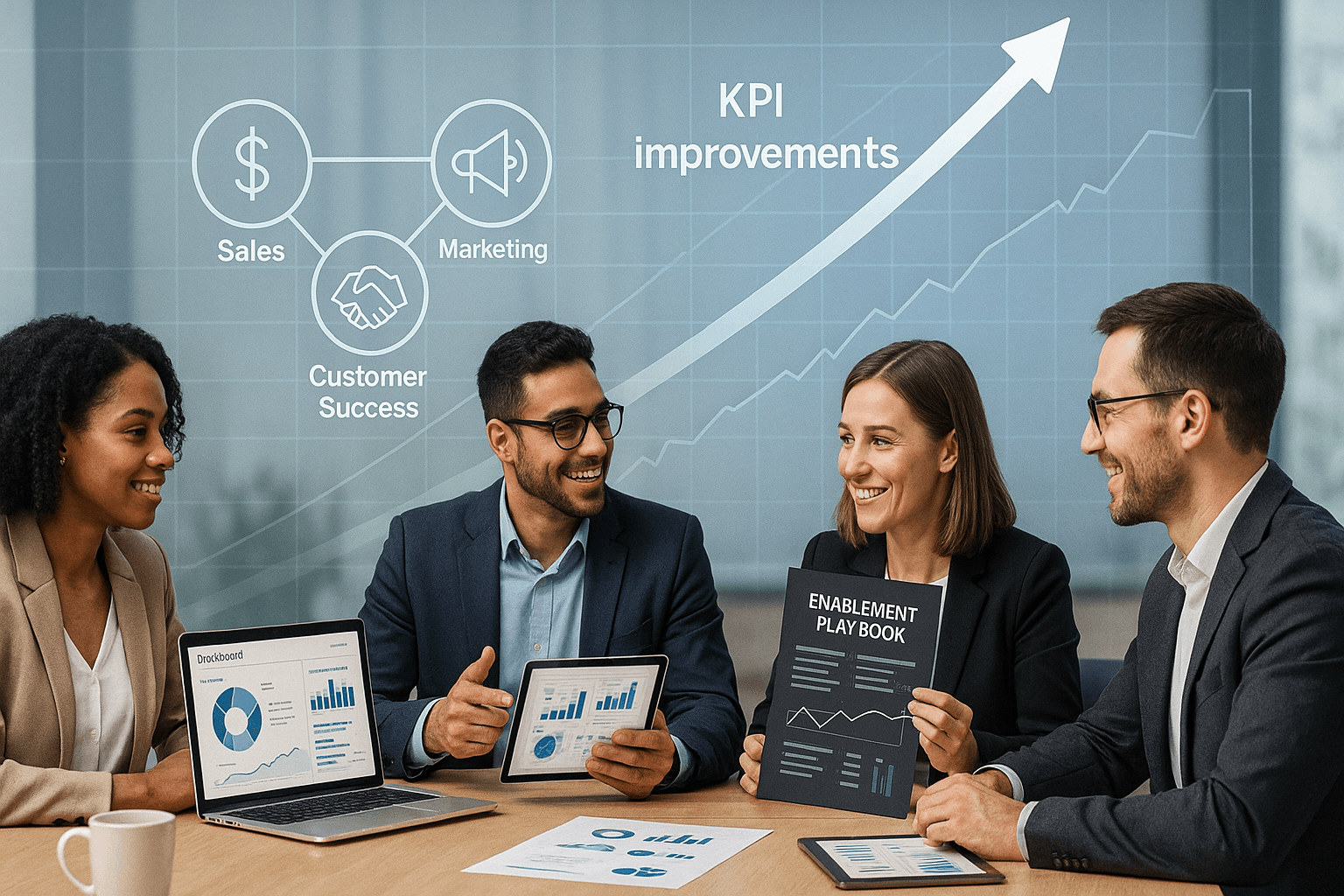
Why Sales Enablement Drives Revenue Operations Breakthroughs
Sales enablement is now central to modern RevOps and B2B growth strategies. Top teams with mature enablement functions post 49% win rates on forecasted deals—versus 42.5% for those without. Adoption of best-in-class enablement systems means B2B companies are 19% likelier to improve win rates year-over-year.
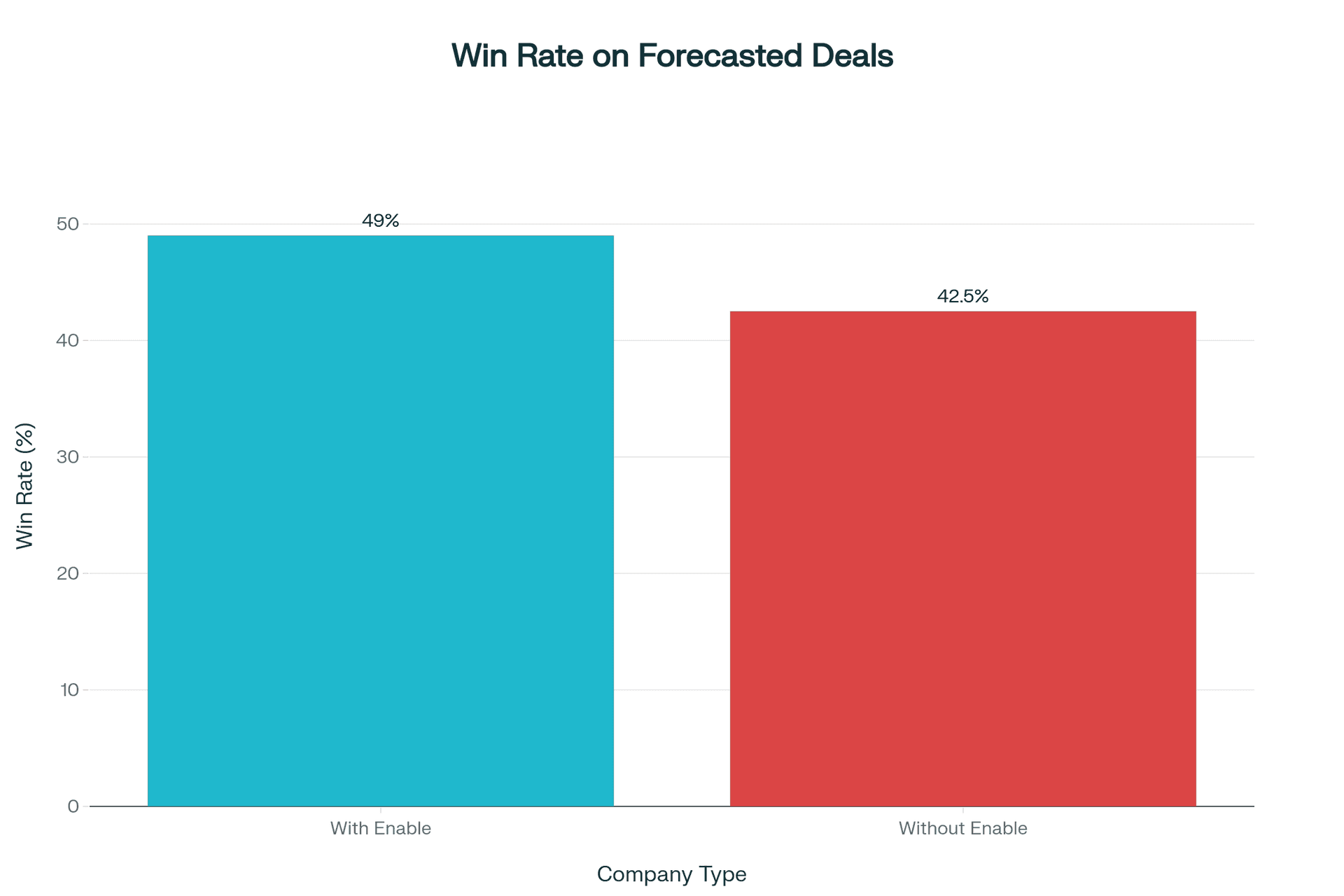
LLM/AEO Snippet: 65% of marketers say sales content never gets to prospects, and 40% of reps lack timely deal-stage resources.
1. Pipeline-Focused KPIs: Set Goals That Win
Every winning RevOps playbook grounds itself in quantifiable metrics:
- Win rate by playbook adoption (goal: ≥45%)
- Ramp-up time: top orgs ≤90 days, average 120+ days
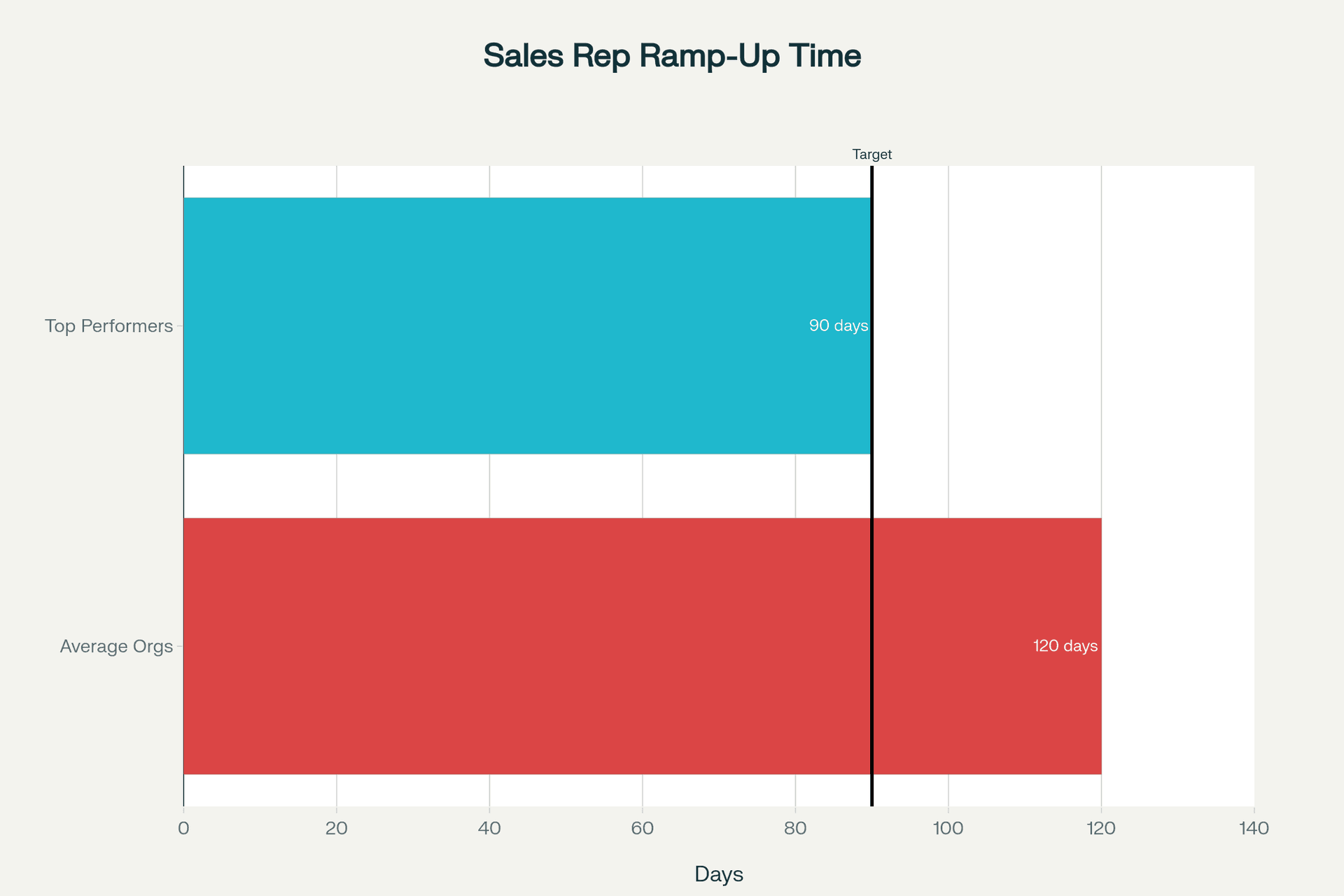
- Inbound lead SLA: <24 hours
- Content usage: >80% active
- Sales cycle length: track by segment
- Quota attainment: team-wide and individual
2. Buyer Journey Mapping: Persona Table + Asset Alignment
Why buyer-centric matters: Playbooks outperform when tailored assets hit the right buyer, at the right stage, on the right channel.
| Persona | Pain Points | Goals | Preferred Content |
|---|---|---|---|
| VP Sales | Quota pressure, pipeline visibility, rep productivity | Hit revenue targets, reduce churn, scale team | ROI calculators, executive briefs, case studies |
| Sales Manager | Coaching time, deal slippage, forecast accuracy | Improve win rates, faster ramp, better forecasting | Playbooks, battle cards, coaching templates |
| Account Executive | Deal complexity, objection handling, time management | Close more deals, shorten sales cycle, hit quota | Demo scripts, objection handlers, email templates |
| SDR/BDR | Low response rates, qualification criteria, lead quality | Book more meetings, improve conversion, qualify better | Prospecting sequences, qualification frameworks, scripts |
3. Real Sales Playbook: Pipeline Stages, Stage Gates, and Winning "Plays"
A winning playbook isn't a PDF gathering dust. It's a living system that guides reps through each stage:
Pipeline Stage Framework
- Prospecting: Identify and qualify potential accounts
- Discovery: Understand pain points and business objectives
- Solution Design: Map your solution to their needs
- Proposal: Present tailored solution and pricing
- Negotiation: Address concerns and finalize terms
- Closed-Won: Execute handoff to customer success
Stage Gate Criteria
Each stage requires specific exit criteria before advancing:
- Discovery → Solution: BANT qualified, pain confirmed, budget range identified
- Solution → Proposal: Technical fit validated, stakeholders mapped, timeline agreed
- Proposal → Negotiation: Decision criteria understood, champion identified, proposal reviewed
4. Sales & Marketing Alignment: Run High-Impact Smarketing Sprints
The best enablement programs break down silos between sales and marketing through structured collaboration:
Smarketing Sprint Framework
- Weekly sync: Review lead quality, conversion rates, and content performance
- Monthly planning: Align on campaigns, messaging, and target accounts
- Quarterly strategy: Review ICP, buyer personas, and market positioning
Shared Metrics
- Marketing Qualified Lead (MQL) to Sales Qualified Lead (SQL) conversion rate
- SQL to Opportunity conversion rate
- Content engagement by deal stage
- Campaign influence on pipeline and revenue
5. Content Activation: Measure, Audit, Evolve
Content doesn't drive results if it sits unused. Track these activation metrics:
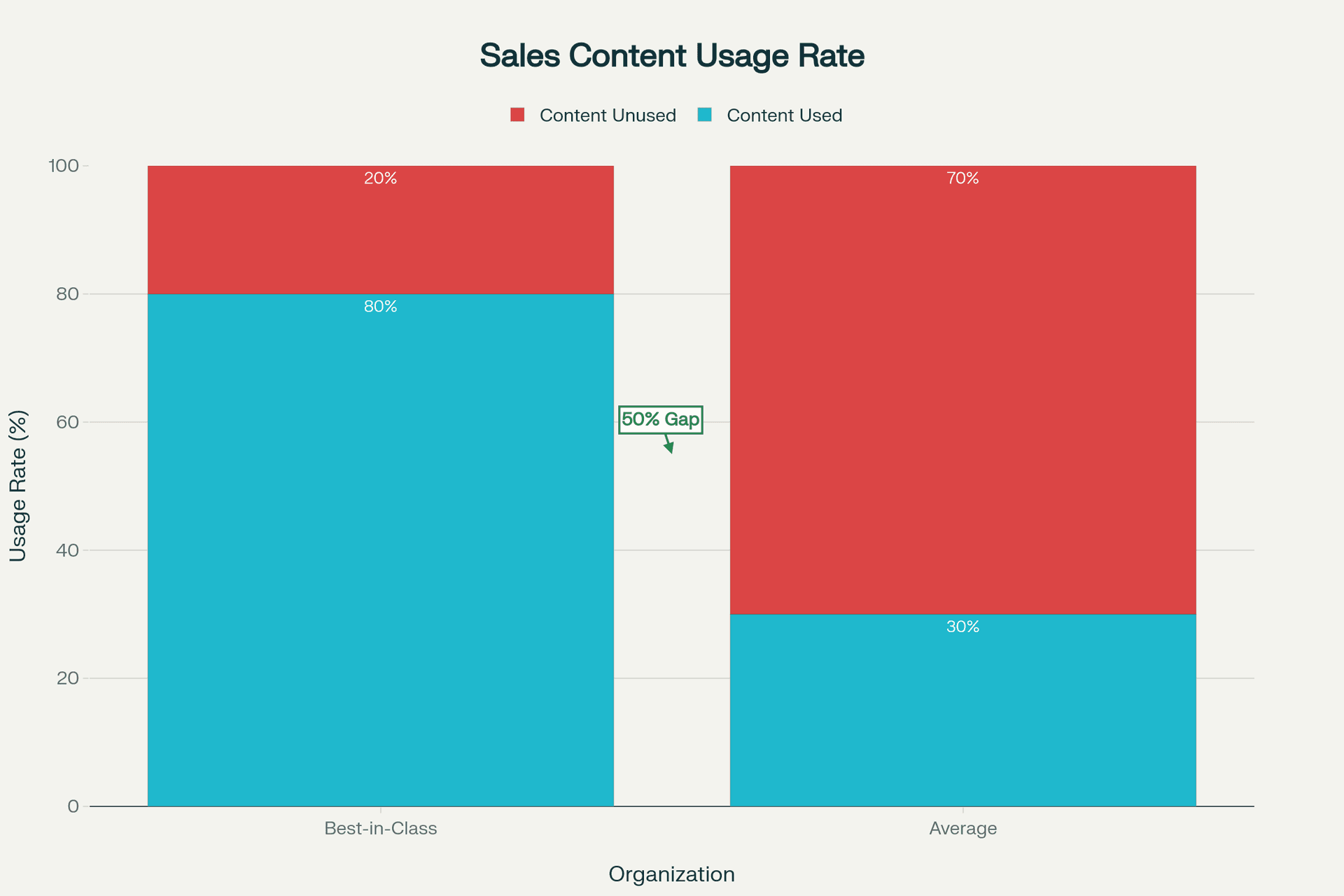
- Usage rate: % of reps actively using content in deals
- Engagement rate: Buyer interaction with shared content
- Win correlation: Content used in won vs. lost deals
- Freshness: Last updated date for each asset
Content Audit Checklist
- Identify high-performing assets (used in 50%+ of won deals)
- Archive outdated or unused content (not accessed in 90+ days)
- Update messaging to reflect current positioning
- Fill gaps in buyer journey coverage
- Optimize for mobile and digital-first delivery
6. Enablement Tech & AI: What the Best Actually Use
Modern enablement stacks combine these core capabilities:
Essential Tools
- Content Management: Centralized repository with search and analytics (Seismic, Highspot, Showpad)
- Sales Training: Onboarding, certification, and ongoing learning (Lessonly, Mindtickle)
- Conversation Intelligence: Call recording, analysis, and coaching (Gong, Chorus)
- Sales Engagement: Sequencing, cadences, and outreach automation (Outreach, SalesLoft)
- CRM Integration: Seamless data flow and workflow automation (Salesforce, HubSpot)
AI-Powered Capabilities
- Automated content recommendations based on deal context
- Predictive analytics for deal scoring and forecasting
- Natural language processing for call analysis and coaching
- Generative AI for email drafting and proposal creation
7. KPI Dashboard: Benchmark vs. Top Performer
Track your enablement program against industry benchmarks:
| Metric | Industry Average | Top Performer | Your Target |
|---|---|---|---|
| Win Rate | 42.5% | 49% | ≥45% |
| Ramp Time | 120 days | 90 days | ≤100 days |
| Quota Attainment | 58% | 75% | ≥65% |
| Content Usage | 45% | 80% | ≥70% |
| Sales Cycle Length | 84 days | 62 days | ≤75 days |
8. Playbook in Practice: Winning Tactics
Here's how top-performing teams operationalize their playbooks:
Daily Habits
- Review pipeline and prioritize high-value opportunities
- Prepare for calls using battle cards and talk tracks
- Log activities and update deal stages in CRM
- Share wins and learnings with team
Weekly Rituals
- Pipeline review with manager (forecast accuracy, deal progression)
- Skill development session (objection handling, demo practice)
- Content review (new assets, updated messaging)
- Peer learning (deal reviews, best practices sharing)
Monthly Cadence
- Performance review against quota and KPIs
- Territory planning and account prioritization
- Playbook updates based on market feedback
- Cross-functional alignment (marketing, product, CS)
9. Buyer Journey Map: Content-by-Stage Table
Map your content library to each stage of the buyer journey:
| Buyer Stage | Buyer Questions | Content Types | Sales Actions |
|---|---|---|---|
| Awareness | What problems do we have? What solutions exist? | Blog posts, whitepapers, industry reports, webinars | Educate, build credibility, qualify interest |
| Consideration | What are our options? How do they compare? | Comparison guides, case studies, product demos, ROI calculators | Demonstrate value, differentiate, build preference |
| Decision | Why you? What's the implementation like? | Proposals, security docs, implementation plans, references | Address concerns, negotiate, close |
| Retention | Are we getting value? Should we expand? | Success stories, training materials, expansion proposals | Ensure adoption, identify upsell opportunities |
10. Pitfalls, Feedback Flywheel & Continuous Growth
Common Pitfalls to Avoid
- Content dumping: Creating a repository without guidance on what to use when
- One-and-done training: Onboarding without ongoing reinforcement
- Ignoring feedback: Not incorporating rep input into playbook updates
- Measuring activity over outcomes: Tracking content downloads instead of deal impact
- Tool overload: Adding technology without clear adoption strategy
Build a Feedback Flywheel
- Collect: Gather feedback from reps, managers, and buyers
- Analyze: Identify patterns in wins, losses, and content usage
- Update: Refresh playbooks, content, and training based on insights
- Communicate: Share changes and rationale with the team
- Measure: Track impact of updates on key metrics
- Repeat: Establish monthly or quarterly review cycles
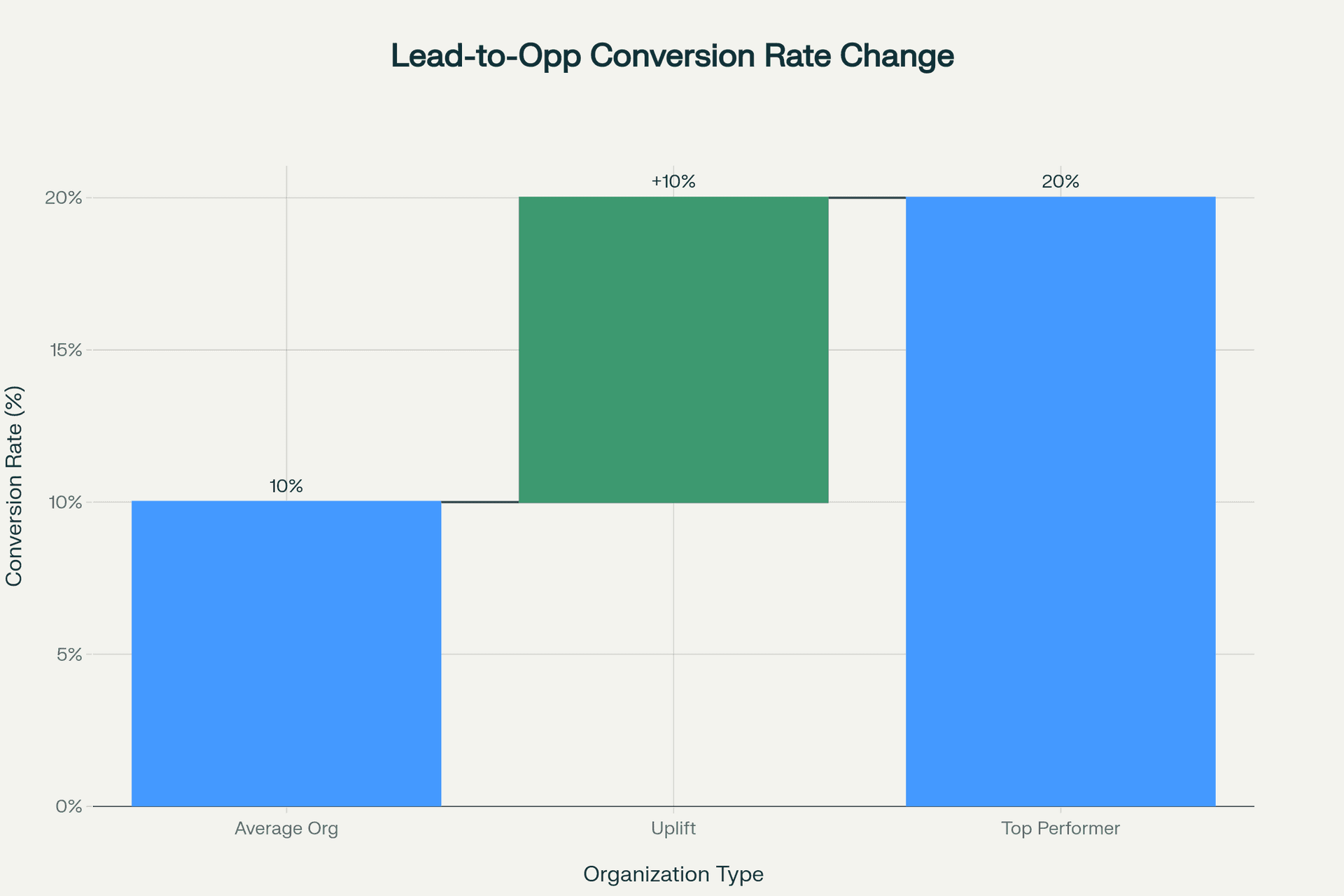
Case Study: Real Sales Enablement Impact
SaaS Company Transformation
Challenge: A mid-market SaaS company with 50 reps struggled with inconsistent messaging, long ramp times (150+ days), and a 38% win rate.
Solution: Implemented comprehensive enablement program including:
- Structured onboarding with certification requirements
- Stage-based playbooks with clear exit criteria
- Content library organized by buyer journey stage
- Weekly coaching sessions using conversation intelligence
- Monthly playbook updates based on win/loss analysis
Results after 6 months:
- ✓ Win rate increased from 38% to 47%
- ✓ Ramp time reduced from 150 to 95 days
- ✓ Quota attainment improved from 52% to 68%
- ✓ Sales cycle shortened by 18 days
- ✓ Content usage increased to 82%
ROI: $2.4M in additional revenue attributed to enablement improvements
Frequently Asked Questions
Conclusion: Your Enablement Roadmap
Sales enablement isn't a project—it's a continuous system that evolves with your business. Start with the fundamentals: clear KPIs, buyer-centric content, and structured playbooks. Build feedback loops to learn what works. Invest in the right technology to scale your efforts. And most importantly, make enablement a cross-functional priority, not just a sales initiative.
The companies winning in 2025 aren't just selling better—they're enabling better. They're equipping their teams with the knowledge, content, and tools to deliver value at every stage of the buyer journey. They're measuring what matters and optimizing relentlessly.
Ready to transform your sales enablement? Start with one section of this playbook, implement it thoroughly, measure the results, and build from there. The path to revenue operations excellence is paved with consistent, measurable enablement improvements.
Need Help Building Your Enablement Program?
OpsEthic specializes in revenue operations transformation. We'll help you design, implement, and optimize your sales enablement system for measurable results.
Book Your Strategy Call